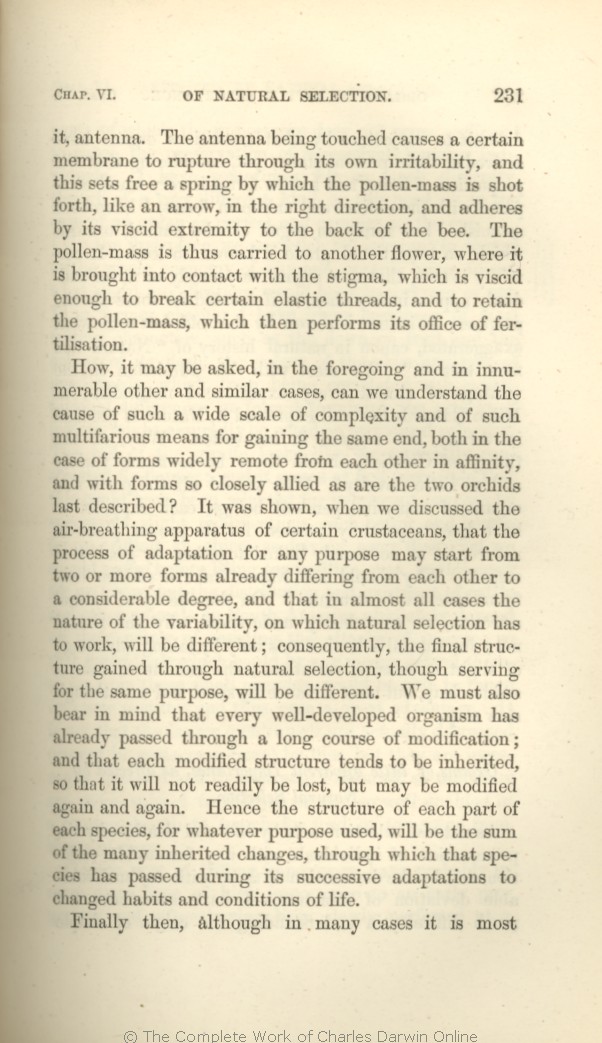it,
antenna. | antenna. 1866 | | the antenna. 1869 1872 |
| antenna 1866 | | antenna, 1869 1872 |
| touched 1866 | | touched, 1869 1872 |
| causes 1866 | | transmits 1869 1872 |
| certain membrane to rupture through its own irritability, and 1866 |
| sensation or vibration to a certain membrane which is instantly ruptured; 1869 1872 |
| is 1866 |
| of a male plant is 1869 |
| of the male plant (for the sexes are separate in this orchid) is 1872 |
| another 1866 | | the 1869 1872 |
| flower, 1866 | | flower 1869 1872 |
| where 1866 |
| of a female plant, where 1869 |
| of the female plant, where 1872 |
| to retain the pollen-mass, which then performs its office of fertilisation. 1866 |
| retaining the pollen, fertilisation is effected. 1869 1872 |
|
How, it may be asked, in the foregoing and in innumerable other
and similar cases, | and similar cases, 1866 |
| instances, 1869 1872 |
| cause of such a wide 1866 |
| graduated 1869 1872 |
| of such 1866 | | the 1869 1872 |
| forms 1866 | forms 1869 1872 |
| widely 1866 | widely 1869 1872 |
| remote 1866 | remote 1869 1872 |
| other 1866 | other 1869 1872 |
| affinity, 1866 | affinity, 1869 1872 |
| forms 1866 | forms 1869 1872 |
| closely 1866 | closely 1869 1872 |
| allied 1866 | allied 1869 1872 |
| orchids 1866 | orchids 1869 1872 |
| described? 1866 | described? 1869 1872 |
| 1 blocks not present in 1859 1860 1861 1866; present in 1869 1872 | | The answer no doubt is, as already remarked, that when two forms vary, which already differ from each other even
in a
slight degree, the variability will not be of the same exact nature, and consequently the results obtained through natural selection for the same general purpose will not be the same.
|
| must 1866 | | should 1869 1872 |
| well-developed 1866 | | highly developed 1869 1872 |
| already 1866 | already 1869 1872 |
| a long course of modification; 1866 1869 |
| many changes; 1872 |
| it 1866 1869 | | each modification 1872 |
| lost, 1866 | | wholly lost, 1869 | | quite lost, 1872 |
| modified 1866 1869 | modified 1872 |
| again. 1866 1869 |
| again further altered. 1872 |
| used, will be 1866 |
| used, is 1869 |
| it may serve, is 1872 |
|









